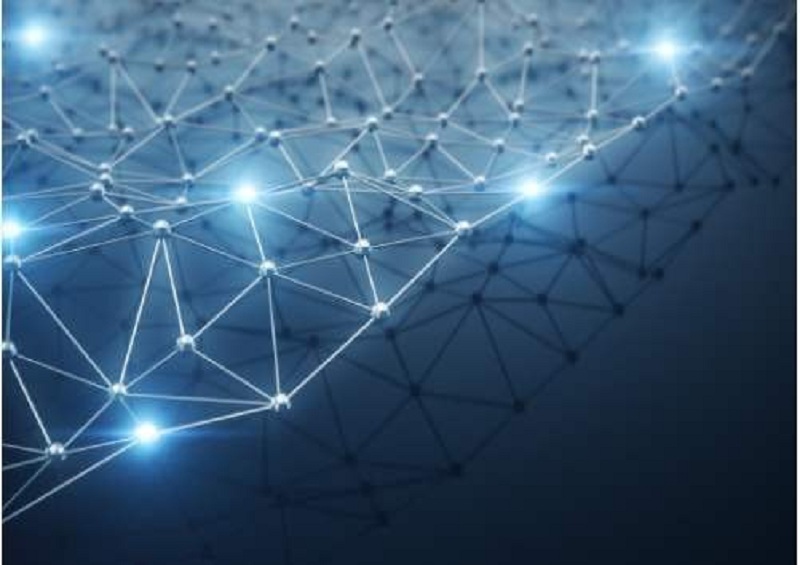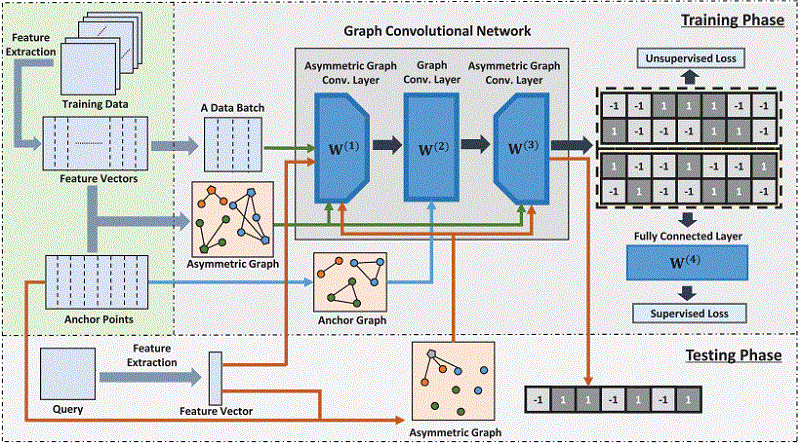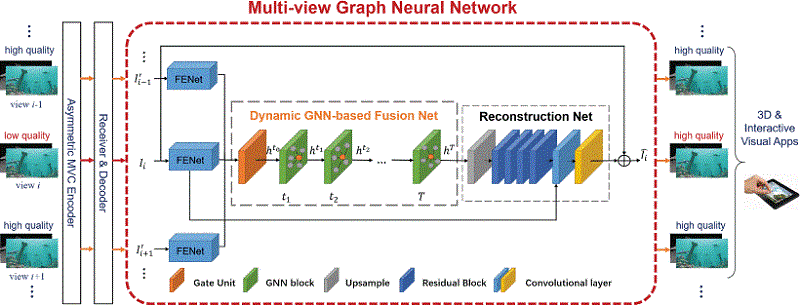热点文献带您关注图神经网络——图书馆前沿文献专题推荐服务(19)
2020-09-11

在上一期AI文献推荐中,我们为您推荐了计算机视觉主动视觉领域的热点论文。在本期推荐中,我们将为您推荐图神经网络的前沿论文。
近年来,越来越多人开始关注图神经网络的研究。计算机视觉是图形神经网络的最大应用领域之一,研究人员利用图结构的方法对场景图生成、点云分类与分割、动作识别等多个方面进行了探索。此外,在人物交互、视觉推理和问答、基于图的推荐系统、交通拥堵、化学等多个领域也能看到图形神经网络的研究。
本期选取了4篇文献,介绍图神经网络的最新动态,包括可扩展至海量数据的基于图卷积网络的半监督哈希框架、解决图像去噪问题的基于图卷积运算的端到端可训练神经网络架构、减少压缩伪像的多视图图神经网络、用于3D形状生成的分层图形网络等文献,推送给相关领域的科研人员。

Graph Convolutional Network Hashing
Zhou, Xiang, etc.
IEEE TRANSACTIONS ON CYBERNETICS, 2020, 50(4): 1460-1472
Recently, graph-based hashing that learns similarity-preserving binary codes via an affinity graph has been extensively studied for large-scale image retrieval. However, most graph-based hashing methods resort to intractable binary quadratic programs, making them unscalable to massive data. In this paper, we propose a novel graph convolutional network-based hashing framework, dubbed GCNH, which directly carries out spectral convolution operations on both an image set and an affinity graph built over the set, naturally yielding similarity-preserving binary embedding. GCNH fundamentally differs from conventional graph hashing methods which adopt an affinity graph as the only learning guidance in an objective function to pursue the binary embedding. As the core ingredient of GCNH, we introduce an intuitive asymmetric graph convolutional (AGC) layer to simultaneously convolve the anchor graph, input data, and convolutional filters. By virtue of the AGC layer, GCNH well addresses the issues of scalability and out-of-sample extension when leveraging affinity graphs for hashing. As a use case of our GCNH, we particularly study the semisupervised hashing scenario in this paper. Comprehensive image retrieval evaluations on the CIFAR-10, NUS-WIDE, and ImageNet datasets demonstrate the consistent advantages of GCNH over the state-of-the-art methods given limited labeled data.

Illustration of the proposed GCNH approach

Deep Graph-Convolutional Image Denoising
Valsesia, Diego, etc.
IEEE TRANSACTIONS ON IMAGE PROCESSING, 2020, 29: 8226-8237
Non-local self-similarity is well-known to be an effective prior for the image denoising problem. However, little work has been done to incorporate it in convolutional neural networks, which surpass non-local model-based methods despite only exploiting local information. In this paper, we propose a novel end-to-end trainable neural network architecture employing layers based on graph convolution operations, thereby creating neurons with non-local receptive fields. The graph convolution operation generalizes the classic convolution to arbitrary graphs. In this work, the graph is dynamically computed from similarities among the hidden features of the network, so that the powerful representation learning capabilities of the network are exploited to uncover self-similar patterns. We introduce a lightweight Edge-Conditioned Convolution which addresses vanishing gradient and over-parameterization issues of this particular graph convolution. Extensive experiments show state-of-the-art performance with improved qualitative and quantitative results on both synthetic Gaussian noise and real noise.

GCDN architecture

MV-GNN: Multi-View Graph Neural Network for Compression Artifacts Reduction
He, Xin, etc.
IEEE TRANSACTIONS ON IMAGE PROCESSING, 2020, 29: 6829-6840
Inevitable compression artifacts in multi-view video (MVV) can clearly degrade the quality of experience in many interaction-oriented 3D visual applications. Under the framework of asymmetric coding, low-quality images can be enhanced with high-quality images from the neighboring viewpoints considering the similarity among different views. However, compression artifacts and warping error cause different cross-view quality gaps for various sequences, and thus the contribution of cross-view priors can hardly be located and considered in previous works. In this paper, we propose a multi-view graph neural network (MV-GNN) to reduce compression artifacts in multi-view compressed images. We dedicate to design a fusion mechanism which can exploit contributions from neighboring viewpoints and meanwhile suppress the misleading information. In our method, a GNN-based fusion mechanism is designed to fuse the cross-view information under the aggregation and update mechanism of GNN. Experiments show that 1.672 dB and 0.0242 average gains on PSNR and SSIM metrics can be obtained, respectively. For the subjective evaluations, blocking effect in the compressed images are clearly suppressed and the damaged object boundary are better recovered. The experimental results demonstrate that our MV-GNN outperforms the state-of-the-art methods.

Framework of the Multi-View Graph Neural Network (MV-GNN)

STRUCTURENET: Hierarchical Graph Networks for 3D Shape Generation
Mo, Kaichun, etc.
ACM TRANSACTIONS ON GRAPHICS, 2019, 38(6)
The ability to generate novel, diverse, and realistic 3D shapes along with associated part semantics and structure is central to many applications requiring high-quality 3D assets or large volumes of realistic training data. A key challenge towards this goal is how to accommodate diverse shape variations, including both continuous deformations of parts as well as structural or discrete alterations which add to, remove from, or modify the shape constituents and compositional structure. Such object structure can typically be organized into a hierarchy of constituent object parts and relationships, represented as a hierarchy of n-ary graphs. We introduce STRUCTURENET, a hierarchical graph network which (i) can directly encode shapes represented as such n-ary graphs, (ii) can be robustly trained on large and complex shape families, and (iii) be used to generate a great diversity of realistic structured shape geometries. Technically, we accomplish this by drawing inspiration from recent advances in graph neural networks to propose an order-invariant encoding of n-ary graphs, considering jointly both part geometry and inter-part relations during network training. We extensively evaluate the quality of the learned latent spaces for various shape families and show significant advantages over baseline and competing methods. The learned latent spaces enable several structure-aware geometry processing applications, including shape generation and interpolation, shape editing, or shape structure discovery directly from un-annotated images, point clouds, or partial scans.

热点论文解读AI应用领域 ——图书馆前沿文献专题推荐服务(3)
热点论文带您探究5G和未来通信——图书馆前沿文献专题推荐服务 (4)
前沿文献带您解读自然语言处理技术 ——图书馆前沿文献专题推荐服务(5)
热点论文带您探究5G和未来通信材料技术领域 ——图书馆前沿文献专题推荐服务(6)
热点文献带您关注AI情感分类技术 ——图书馆前沿文献专题推荐服务(7)
热点论文带您探究6G的无限可能——图书馆前沿文献专题推荐服务(8)
热点文献带您关注AI文本摘要自动生成 ——图书馆前沿文献专题推荐服务(9)
热点论文:5G/6G引领社会新进步——图书馆前沿文献专题推荐服务(10)
热点文献带您关注AI机器翻译 ——图书馆前沿文献专题推荐服务(11)
热点论文与您探讨5G/6G网络技术新进展——图书馆前沿文献专题推荐服务(12)
热点文献带您关注AI计算机视觉 ——图书馆前沿文献专题推荐服务(13)
热点论文与带您领略5G/6G的硬科技与新思路 ——图书馆前沿文献专题推荐服务(14)
热点文献带您关注AI计算机视觉 ——图书馆前沿文献专题推荐服务(15)